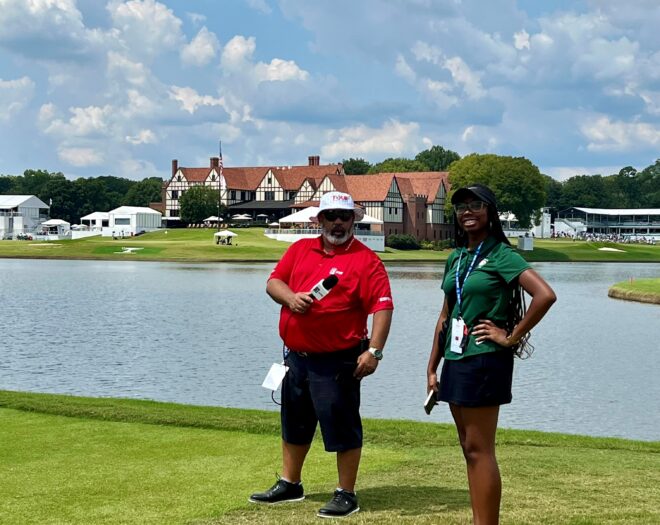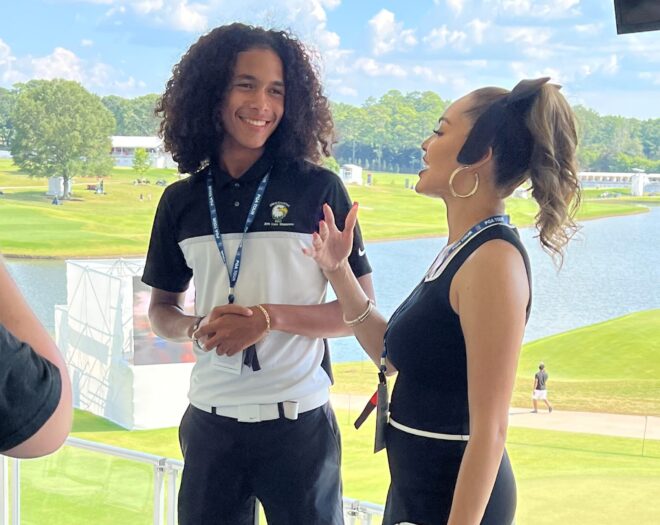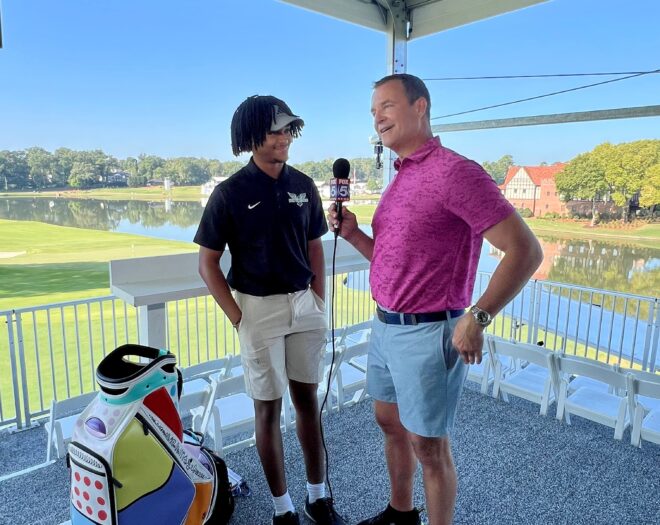Throughout the TOUR Championship, a team of student correspondents from Drew Charter School are providing their perspectives on the week. This piece is written by Asher McGee, an honors student and senior at Drew Charter School who is an all-region basketball player with hopes of playing at the collegiate level.
By Asher McGee
There are many athletes who have had a major impact on me and my family growing up, some of whom transcend the sport in which they play. Tiger Woods is one of those people.
When my counselor and teacher Mr. Richardson first approached me about the idea of being able to work at a PGA TOUR event, I didn’t really know what to expect. The last time I came to the TOUR Championship I was in the sixth grade, and I didn’t actually meet any golfers. And when Mr. Richardson asked me I didn’t know exactly what I would be doing if I decided to actually take him up on this.
Despite this, I took him up on this opportunity, not knowing that I would have a chance to meet one of the most dominant athletes in history. Growing up as the youngest of three boys, I was heavily influenced by what my older family members did whether it was sports, food, or anything else. It’s because of this that I know a lot of old basketball players that a lot of my friends may not know about.
However, there were two golfers that I remember hearing about all the time growing up: Phil Mickelson and Tiger Woods. Whether I knew it at the time or not, Tiger was busy becoming one of the greatest golfers of all time, and I always remember my dad cheering for him. Even to this day, whenever my dad brings up golf he’s going to bring up Tiger.
It’s crazy when I think about it, but Tiger is just one of those athletes who is known globally by his first name alone. There are only a handful of people that I’m aware of that have that type of recognition: Jordan, Kobe, LeBron, and Tiger. One thing that separates Tiger from the rest of those names is that while Jordan, Kobe, and LeBron were all dominant in a sport predominantly played by players of color, Tiger dominated in a sport where there aren’t that many black people.
I think that’s why Tiger receives so much love in my house and my community.
He gives them a sense of pride.
I say all this just to show that there were a million things going through my brain when Mr. Richardson told me that I might get a chance to meet Tiger Woods. To put it in his words, my chances were “50-50” so I wasn’t that nervous or excited when he brought it to my attention yesterday. It didn’t actually hit me that this was really happening until I walked into the media room with Catherine Woodling with the East Lake Foundation. It was all just so big. I’ve traveled places before and been places, but there was a sense of professionalism in the room that I had never quite seen before.
My heart was racing a little bit, but it wasn’t pumping as fast as when I actually got in the press room and Tiger Woods walked through the door and up to the podium. It was all so astonishing. I’d never actually been in a situation like this before and to say I was nervous would be an understatement. Lucky for me, there were two ladies to my left whose job was to transcript the entire interview. They helped me feel like I was supposed to be there along with Catherine, who was helping me think of questions to ask Tiger. I was trying to think of questions that I could ask him that nobody else would – a question that I could ask from my perspective that I genuinely wanted to ask.
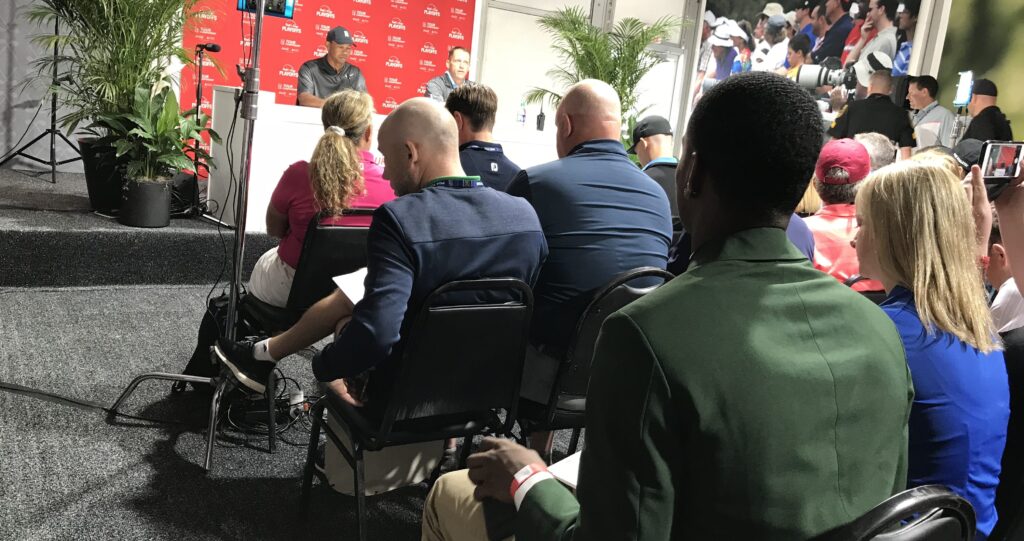
Being an athlete, I was always taught to pick the brain of those who came before you. Try to always get a little bit of insight on what makes them great. With Tiger, I could see how competitive he was just based off the way he answered questions and the look in his eyes. The way he paid attention to certain details that cost him a win like chipping, putting, or hitting. The crazy thing is he didn’t sound mad when he brought up mistakes that had cost him something in the past; he sounded calm and sure. I found this very similar to when I watch interviews of Kobe Bryant. The look in his eyes, the detail, the way he describes certain situations.
And he kept this same manner whenever he would answer a question, which I thought was amazing. When I asked him what advice he would give a student-athlete, I kind of already knew that he was going to bring up hard work, but there was one thing that he said that stood out to me specifically:
You know, I think it would be very simple. It’s hard work. And I’ve always believed in working hard, and I have — in my career, and for me personally — I’ve derived a lot of my confidence from practice and putting out the effort. I have always said I’ll outwork you, and because of that, when I get into an event, I know I’ve outworked you. So that mental edge over my career has panned out.
I think that some of the student-athletes that I’ve been able to work with over the years have learned that there really is no substitute for hard work and putting everything on the line.
Tiger said when you practice and work really hard, you gain a mental edge over your opponent. If there is one thing I learned about being an athlete, it’s that everything is 90 percent mental, and 10 percent physical. To know that you’ve outworked somebody that you’re about to face … there’s no better feeling. And there’s absolutely no substitute for hard work.
Overall, meeting and being able to be a part of Tiger Woods press conference was a thrilling experience. So thrilling in fact I’m still in shock that I actually got to meet him and talk to him. I’m very much looking forward to what the rest of this week holds as my classmates and I get to be a part of the TOUR Championship.
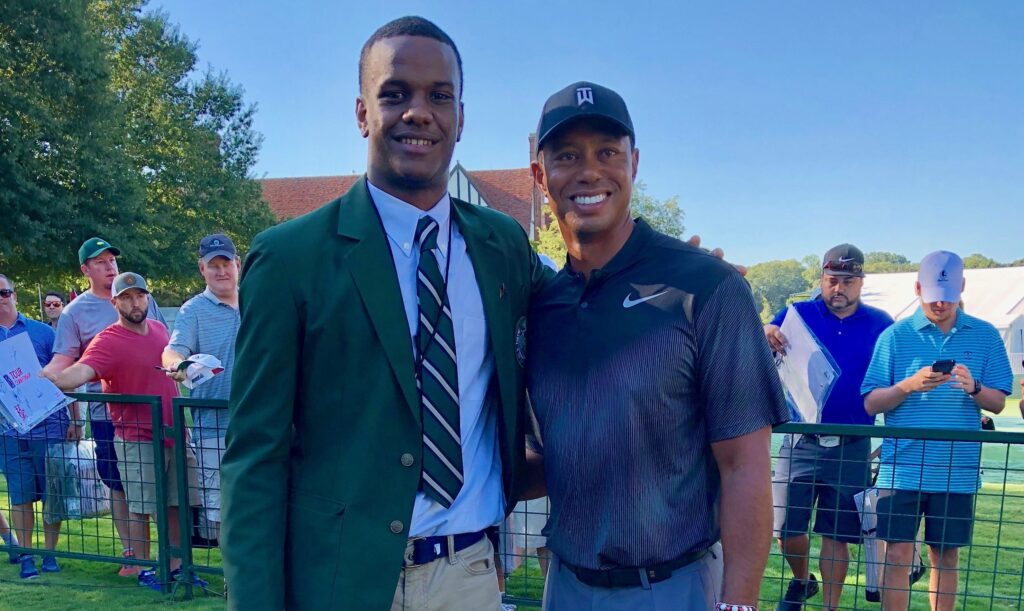
The Drew Charter School is a key component in the East Lake Foundation’s cradle-to-college pipeline. The Foundation is one of the primary beneficiaries of the TOUR Championship.

